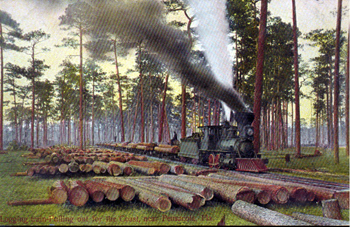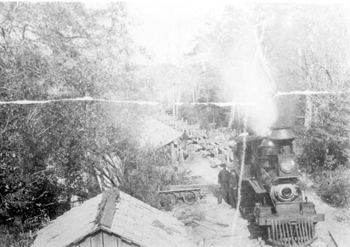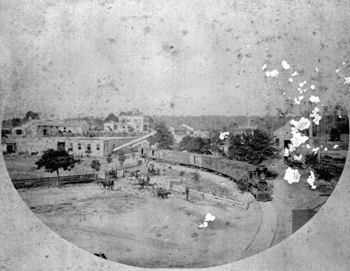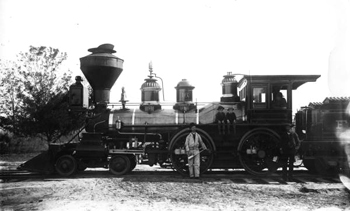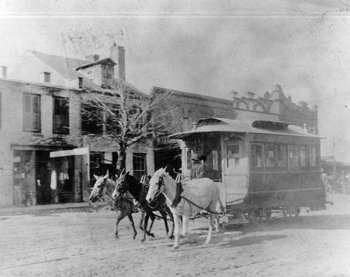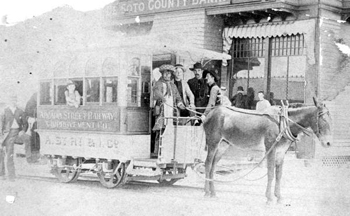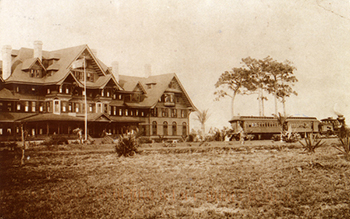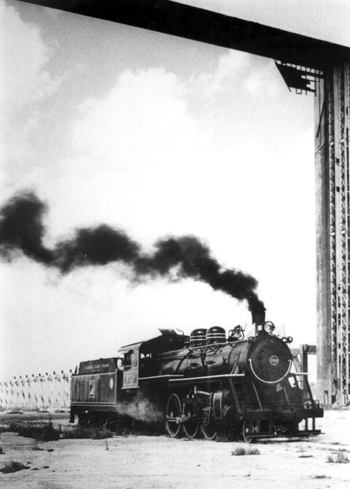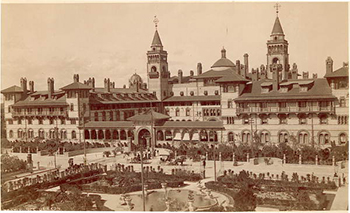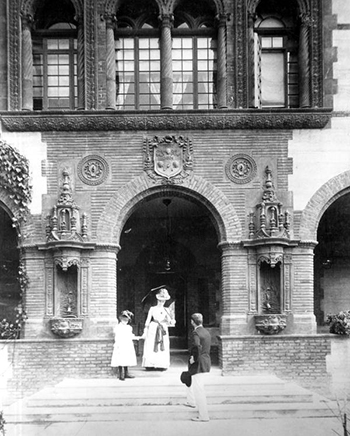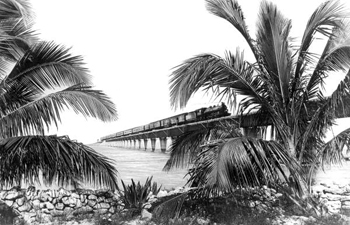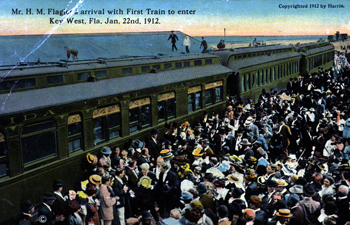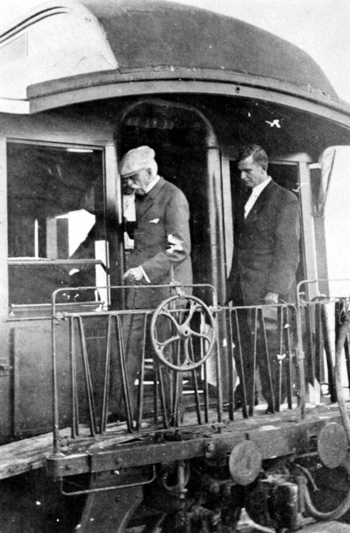Railroads Change Florida
Photos and History
Through Swamps and Sawgrass
Railroads opened Florida to new industries, expanded the tourist economy, and allowed for rapid development of residential and commercial areas.
The first rail development authorized in Florida was the Tallahassee–St. Marks line, chartered in 1834. The first train to operate, however, was the Lake Wimico line that connected the boomtown of St. Joseph to the Apalachicola River in 1836.
The Tallahassee–St. Marks train, which was initially mule–drawn, connected the highly productive cotton fields of Leon and Jefferson counties with the port city of St. Marks.
Logging train pulling out for the coast: near Pensacola, Florida
Image number: PC2030
The Railroad System
The Internal Improvement Act of 1855 granted railroad companies land in exchange for new tracks. The state government supported the railroads because better transportation would help facilitate a stronger economy for Florida. With state support, railroad developers began linking East and West Florida. Senator David L. Yulee became the president of the Florida Railroad, completed in 1860, that connected the port cities of Fernandina and Cedar Key.
New railway construction progressed slowly until the Civil War. Union attacks destroyed some sections of the Florida railroads. Florida's Confederate government temporarily removed tracks in other locations to prevent Union forces from using the railroads.
The Confederate government moved to seize existing rails to reuse the iron for new rail lines to transport troops and supplies. Despite some cooperation between railroad owners and the Confederate government, railroad operators such as David Yulee met the state's efforts to take over lines with resistance-and even legal action.
Pensacola and Andalusia Railroad Company train unloading logs into Escambia River
Image number: RC11103
The logs floated to the Skinner Manufacturing Company mill.
View from cotton gin: Madison, Florida (188-)
Image number: N046662
Looking East from Ingless cotton gin toward the Ingless home in the back center.
Boys and crew posed with Florida Railway and Navigation Company engine number 16 (ca. 1886)
Image number: HA00076
Trolleys
Trolleys were usually lighter than trains and ran on tracks built into city streets.
Tallahassee Railroad Company's mule drawn car proceeding south between Pensacola Street and Jefferson: Tallahassee, Florida (1894)
Image number: RC08644
Billy Bowlegs III and the street railway of Arcadia (1889)
Image number: PR02655
Connecting the Cities
During the 1880s and 1890s, Henry Flagler expanded train lines through Jacksonville and down the East coast to Miami. Before the arrival of the railroad, Miami was a town of fewer than 300 people. The mail was delivered on foot by a postal carrier who walked barefoot along the beach. When Miami stayed warm and green during the great freeze of 1894-95, Flagler was convinced that it was worth expanding his railroad.
Henry Plant had become wealthy running the successful Southern Express during the Civil War. Plant expanded train lines to Tampa and the West coast.
Flagler and Plant built grand hotels to entice vacationers seeking sun and luxury. The railroads connected Florida's developing industrial centers, tourist destinations, agricultural sectors and growing communities.
Plant System train at the Belleview Hotel in Belleair near Clearwater, Florida
Image number: PC07427
Accompanying note: "Short line railroad, owned by Henry B. Plant, was called the Plant System. Plant combined railway and Hotel to lavishly entertain railway shippers and celebrities. Shown, passengers disembarking to occupy Hotel."
Florida East Coast Railway steam engine #153: Miami, Florida (ca. 1900)
Image number: RC07782
Hotel Ponce de Leon
Flagler built the Ponce de Leon as part of a chain of hotels along his Florida East Coast Railway. He hoped to induce wealthy northeastern tourists to come down and spend their winters in the Sunshine State. Flagler commissioned New York architects John Carrere and Thomas Hastings to design a Spanish palace with courts, nooks for reading, tropical gardens, fountains and towers. The hotel opened on January 10, 1888.
Each room was equipped with steam heat, which to many seemed an odd fit for a Florida hotel. Another novelty was the presence of electric lights in every room. The hotel was forced to hire extra staff to turn the lights off and on for guests who were afraid of being shocked!
Looking northwest at the Hotel Ponce de Leon (ca. 1900)
Henry Flagler opened the Hotel Ponce de Leon in St. Augustine, Florida in 1888.
Image number: PR20720
Ladies entrance to the Ponce de Leon hotel: St. Augustine, Florida (1890s)
Image number: RC02783
The Overseas Extension Connects Miami to Key West
Henry Flagler began the Overseas Extension in 1906 to connect Miami to Key West. This ambitious and innovative project required money, earth-moving, man-hours, and miles of bridges.
Florida East Coast Railway train traveling along Overseas Extension bridge
Image number: RC03742
Henry Flagler's arrival with first train to enter Key West, Florida (1912)
Image number: PC1732
Henry Flagler disembarking train at Key West (1912)
Image number: PR09281
Flagler getting off the train at Key West for the official opening of the extension to Key West.

 Listen: The Bluegrass & Old-Time Program
Listen: The Bluegrass & Old-Time Program